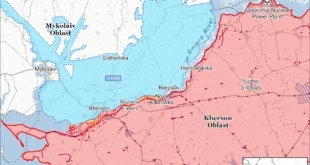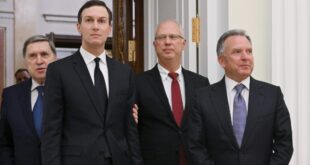Russia’s chief nuclear official has vowed to continue developing new weapons while attending a funeral on August 12 of five Russian nuclear researchers who were killed in an explosion in what U.S. experts suspect was a mishandled test of a new nuclear-powered engine.
The five were buried in Sarov, a closed city some 375 kilometers east of Moscow that has served as a center for Russia’s nuclear weapons program since the late 1940s.
The blast occurred on August 8 on a sea platform at the navy’s testing range in Nyonoksa in the northwestern Arkhangelsk region.
The New York Times on August 12 cited anonymous U.S. intelligence officials who said Russia was apparently testing a “new type of nuclear-propelled cruise missile,” while saying the blast could possibly be “one of the worst nuclear accidents in the region since Chernobyl.”
U.S. President Donald Trump said the United States is “learning much from the failed mission explosion,” according to an August 12 tweet.
Referring to a new cruise missile that Russia is allegedly developing, dubbed SSC-X-9 Skyfall by NATO, Trump said the “explosion has people worried about the air around the facility, and far beyond.”
Russia’s Defense Ministry initially said the explosion killed two people and injured six others, but the state Rosatom atomic power agency acknowledged later that five of its employees were killed and three injured.
The coffins were displayed at Sarov’s main square before being transported to a cemetery.
Rosatom director Aleksei Likhachev praised the victims as “true heroes” and “the pride of our country.”
“The best tribute to them will be our continued work on new models of weapons, which will definitely be carried out to the end,” Likhachev said.
Rosatom said the blast occurred during the testing of a “nuclear-isotope power source” for a rocket engine.
The blast was followed by a 30-minute radiation spike in Severodvinsk, a city 40 kilometers east of the Nyonoksa test range, by the White Sea, local officials said, adding that it didn’t pose any health hazards.
The Defense Ministry insisted that no radiation had been released.
Neither the Defense Ministry nor Rosatom identified the type of rocket that blew up during the test, saying only that it had liquid propellant.
Historically, Russia has kept major accidents a secret, most notably after a 1986 explosion at the Chernobyl nuclear power plant in what is modern-day Ukraine, still regarded as the worst nuclear accident in history.
The military was also shaken by the deaths of 14 sailors killed in a fire on one of the navy’s research submersibles in July 1.
Military and government authorities have given scant details about the incident, which the Defense Ministry said occurred in the Barents Sea and was one of Russia’s worst submarine disasters in years.
 Eurasia Press & News
Eurasia Press & News



